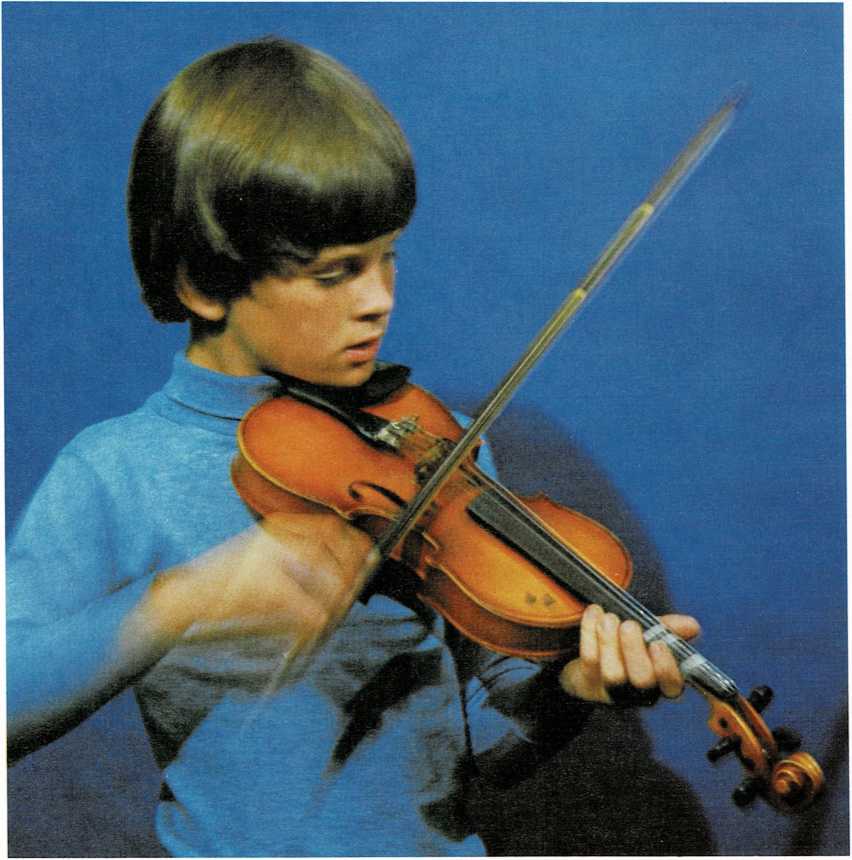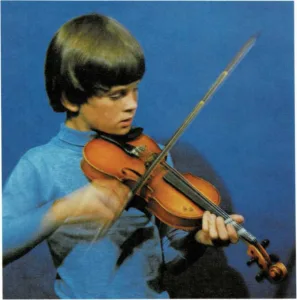
To play a violin, you rub the strings with a bow. The strings vibrate
and make the sounds.
Singing strings
Can you make a string sing? You certainly can. When you play a stringed
instrument, that’s exactly what you do. Rubbing or plucking the tightly
stretched strings makes them vibrate and produce sounds.
A violin has strings that make music when you rub them with a bow
[(boh)]{.smallcaps}—a wooden stick with horsehair stretched from one
end to the other. When the bow is rubbed across the violin strings, it
makes the strings vibrate. This makes the sound.
The strings are stretched over a thin wooden bridge on top of the
violin. As the strings vibrate, they make the bridge vibrate. And the
vibrating bridge makes the rest of the violin vibrate, too. All these
vibrations make the full, rich violin sounds you hear.
You can make the sounds higher or lower by pressing down on the strings
in different places. Pressing on the string changes the length of the
part that vibrates. The shorter the vibrating part, the faster it moves
and the higher the note sounds.
A viola (vee [oh]{.smallcaps} luh), a violoncello [(vee]{.smallcaps} uh
lahn [chehl]{.smallcaps} oh), and a double bass [(duhb]{.smallcaps} uhl
[bays)]{.smallcaps} are bigger relatives of the violin. Their larger
bodies and longer, heavier strings make deeper sounds.
Some stringed instruments are played without a bow. You pluck the
strings with your fingers, or with a thin, hard pick, to make them
vibrate. A harp has short and long strings for the high and low sounds.
On instruments such as the guitar, the strings are different
thicknesses, but the same length. To make high notes, you shorten the
strings by pressing them as you play.

